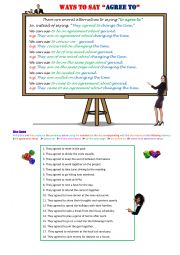
|
Ways to say "agree to."
6 different ways to say "agree to" in the form of a dice-game. Introduce the alternative expressions and then roll a dice for each of the 18 sentences in the box to rephrase according to the number on the dice and the corresponding expression or word. Useful for Cambridge exam preparation as it helps to develop range.
Level: intermediate
Age: 14-100
Type:
Downloads: 36
|
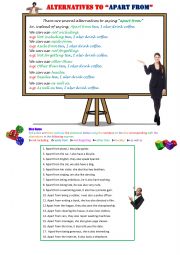
|
Ways to say "Apart from"
A short worksheet to practice saying "apart from." The alternatives are given and then there are 18 sentences to practice in the form of a dice game. Great for increasing range especially if the students have exams pending.
Level: intermediate
Age: 16-100
Type:
Downloads: 29
|
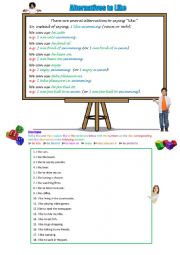
|
Ways to say "like"
6 different ways to say "like." The alternatives are presented in a simple manner and then a chance to practice saying the expressions is given using a dice as a kind of game. This can be used for FCE preparation to improve the students� range of vocabulary.
Level: intermediate
Age: 11-100
Type:
Downloads: 41
|
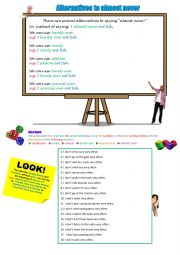
|
Ways to Say Almost Never
A short worksheet to practice saying adverbs of frequency that mean "almost never." The alternatives are given and then there are 18 sentences to practice in the form of a dice game. Great for increasing range especially if the students have exams pending.
Level: elementary
Age: 13-100
Type: worksheet
Downloads: 29
|
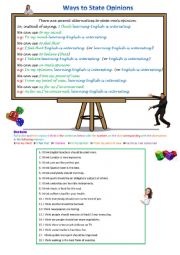
|
Ways to State Opinions
Another dice game to show six different ways to state one�s opinion. Useful for widening the range of students when preparing them for Cambridge exams.
Level: intermediate
Age: 11-100
Type:
Downloads: 47
|
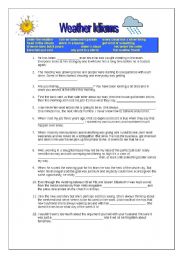
|
Weather idioms exercise with key
A small cloze exercise for advanced students complete with key and fully editable. Something I did a few years ago and it has been sitting on my PC doing nothing ever since. Not sure if some of the expressions are different the other side of the pond or not. You might need to check.
Level: advanced
Age: 12-17
Type: worksheet
Downloads: 171
|
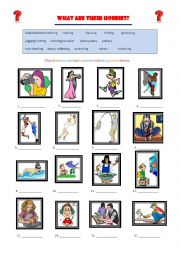
|
What are their hobbies?
A picture mix and match worksheet to introduce people�s hobbies in English. An answer key is provided.
Level: elementary
Age: 9-100
Type: worksheet
Downloads: 28
|
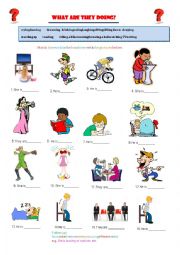
|
What are they doing?
Students select the words from the box and match them to the correct picture. It can also be used to practise short form questions and answers. Key provided.
Level: elementary
Age: 5-100
Type: worksheet
Downloads: 107
|
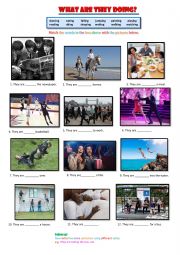
|
What are they doing?
Yet another present continuous worksheet but this time for third person singular only. It can be used for sentence formation, asking and responding to questions using short forms, and key question practice. The gapfill can be assigned as homework.
Level: elementary
Age: 9-100
Type:
Downloads: 15
|
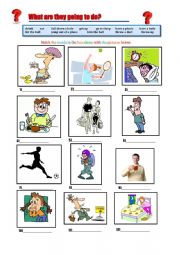
|
What are they going to do?
A small worksheet on predicting what people are going to do. Pre-teach the structure of "going to do something" and then get each student to tell you what each person in the pictures is going to do. You can use simple questions to consolidate and then get them to write complete sentences for each picture as homework. Answers are on the back.
Level: elementary
Age: 11-100
Type:
Downloads: 35
|